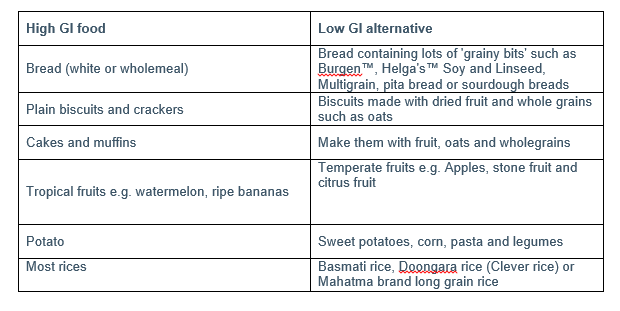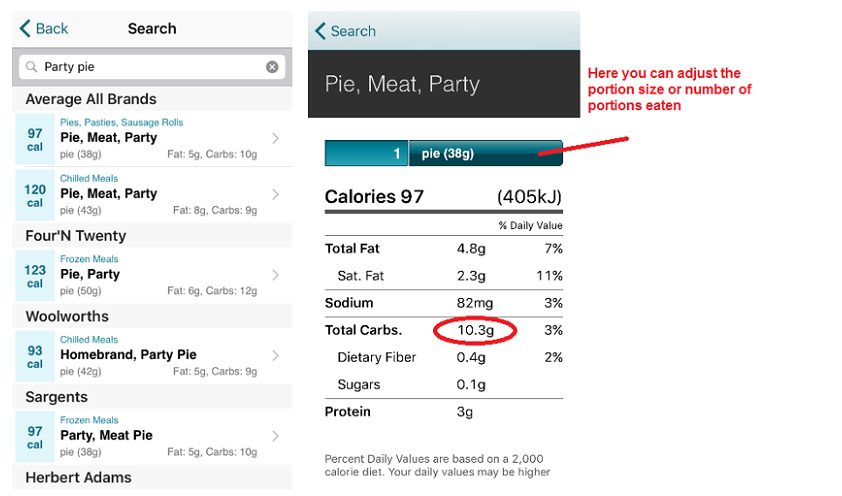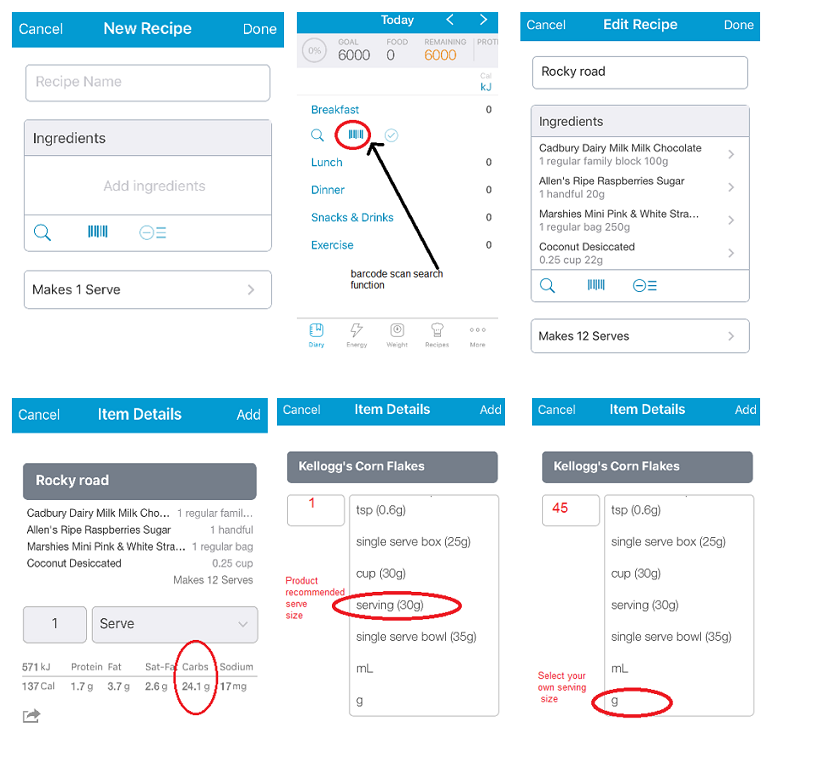The diet used in the treatment of diabetes is a healthy, well-balanced diet, that allows all the necessary foods to meet your nutritional requirements. Young people with diabetes do not need to follow a special diet or use any special foods or products. The healthy food pyramid can be used as a good guide for healthy food choices (see pyramid below).
It is important to eat three regular meals throughout the day i.e. breakfast, lunch and dinner. Snacks are optional for children on multiple daily injections (MDI) and pumps, but may be necessary for children on twice daily insulin (i.e. Novorapid and Levemir, OR Novomix, injected at breakfast and dinner). If children on MDI or pumps choose to eat snacks, they should be small ( <8g carbohydrates for young children, or <15g for older children). Children on pumps should bolus insulin for their snacks. All meals and snacks should include some carbohydrates, because children require carbohydrate foods for growth and energy. Foods containing carbohydrate include bread, breakfast cereals, potato, rice, pasta, crackers, fruit, milk and yoghurt.
A good understanding of carbohydrates is essential for families of children with diabetes. Regular contact with Dietitian experienced in Diabetes care is highly recommended for children with diabetes. Your Dietitian can help with all aspects of nutrition and food including issues with food patterns and carbohydrate spread, growth and development, appetite, physical activity, or just further education and advice on food and diabetes.
.PNG)
Carbohydrate counting
People living with diabetes should have a good knowledge of how to count or measure the carbohydrates in the foods they eat, regardless of what type of insulin regimen they are on. This is because the amount of carbohydrates you eat will have a direct impact on the amount of insulin you need to inject or deliver. Carbohydrates can be counted using several different methods, none being more superior to the rest. For example, many people count carbs in ‘serves’: one serve being about 15 grams of carbohydrate (e.g. 1 slice of bread, 1 medium piece of fruit, 250mL plain milk etc). People using insulin pumps tends to count carbs in grams. Your dietitian can help you with your carb counting skills.
Low GI and diabetes
It is important to try and include at least one low-glycaemic index (low GI) food at every meal and snack. Low GI foods let the blood sugars rise more slowly and steadily and are more sustaining than foods with a higher GI. Check out the low GI food checklist below. Sugar and foods containing added sugars can be included in moderation in a healthy low-GI based diet without upsetting diabetes control.
Does that mean I should only eat low GI foods?
No. There are some foods that have a high glycaemic index value that provide other important nutrients (vitamins and minerals) and are found in the base of the healthy food pyramid (the "eat most" section). These foods (e.g. watermelon and other tropical fruits) should not be excluded and can be eaten in conjunction with other low glycaemic index foods. Combining low and high GI foods together results in a moderate GI effect.
There are also many foods that have a low glycaemic index but are high in fat or have poor nutritional value and are therefore found in the top section of the healthy food pyramid (the "eat least" section). These foods are not recommended to be eaten on a regular basis.
So remember, glycaemic index value alone does not determine the suitability of a food - the guidelines of a healthy diet (as illustrated by the healthy food pyramid) are the most important considerations. Stick to the guidelines of the healthy food pyramid and select low glycaemic index food choices where practical.
For up to date information on glycaemic index go to https://www.glycemicindex.com/
Making the changes from high GI to low GI choices

Calorie King
This app generates a nutrition panel similar to that seen on product packaging. The beauty of the app is the ability to manipulate the portion size consumed while the app calculates the amount of each nutrient (carbohydrate in this case) for you! If the specific brand is unknown the app can generate an average for all brands. If the specific brand is known, you can scroll down the list to find it for more accurate information. Available on both Apple & Android.

Carb & Cals: Diet and Diabetes
This app is great for people who like a visual reference for their portion sizes. You choose a food and then get to look at different serving sizes labelled with how many carbs are in each. Available on both Apple & Android.
Easy Diet Diary
This app is useful for a number of its functions, most relevant to diabetes is the ability to input your own recipes to assist with carbohydrate counting. Once the recipe ingredients and quantities have been entered, along with the number of serves produced by the recipe, the app automatically generates a nutrition panel similar to those seen in apps mentioned above. Only available on Apple
